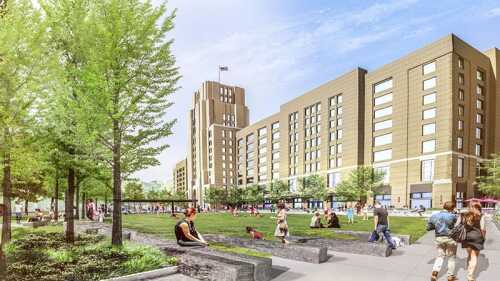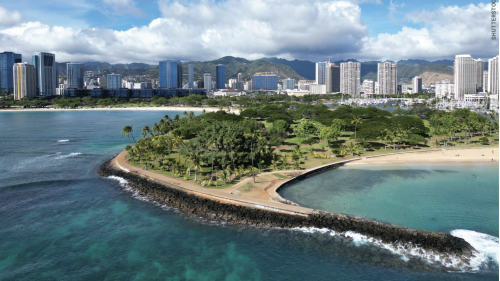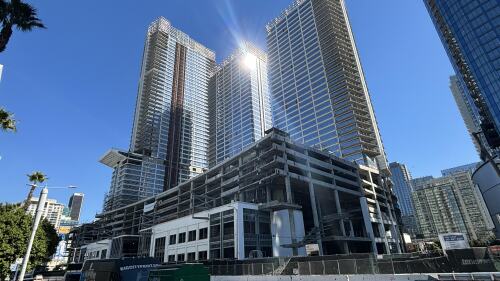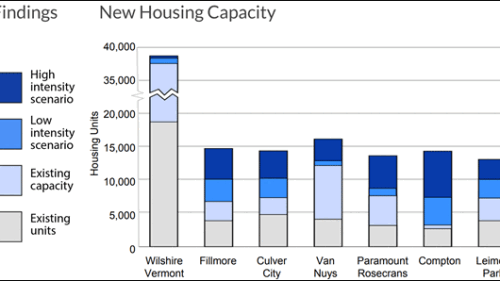Property Types
Hotels and Resorts
The Colorado Convention Center is one of the country’s busiest meeting venues. The work of a ULI Advisory Services panel played a significant role in Denver’s decision to build the convention center. But it had a humble and fractious start.
Risk, other than literally, is not a four-letter word when investing in Asia real estate. Risk is a fact-of-life that needs to be constantly assessed on the ground, a trio of experts said at a session on Asia real estate capital markets.
Resort developers and operators took a hit during the recession, but are making a cautious comeback, according to a panel at ULI’s Fall Meeting.
Industrial
U.S. East Coast and Gulf ports are upgrading facilities in anticipation of supersized ships transiting the Panama Canal in 2014, while some smaller port cities are strategically positioned to fight for their share of the new business.
The government’s data center consolidation efforts, cloud computing initiative, and budget constraints are creating opportunities for private data centers, attendees at one Bisnow Media event learned.
In its transition from an industrial economy to a knowledge-based one, Kendall Square in Cambridge, Massachusetts, has become the most robust innovation-based cluster in the nation—if not the world.
Mixed-Use
A panel discussion at the recent ULI Europe Real Estate Forum in Dublin examined how investors are driving demand for and managing mixed-use districts and buildings. Speakers said that rather than many small and varied projects, they have concentrated on fewer and larger high-return projects.
A former Sears, Roebuck & Company distribution center and retail location in the Crosstown neighborhood of Memphis with historic landmark status has evolved into a mixed-use project with retail, health and educational space, plus apartments.
The area surrounding the historic baseball stadium has been transfigured by new residential skyscrapers where fast-food restaurants once stood, in addition to high-tech health companies and a market concept popular in Portugal.
Multifamily
Surge: Coastal Resilience and Real Estate, a ULI research report, documents the challenges associated with coastal hazards such as sea level rise, coastal storms, flooding, erosion, and subsidence, and provides best practices for real estate and land use professionals, as well as public officials, to address them.
Northern Mexico has experienced a significant expansion in the Mexican industrial real estate sector since its major decline from the late 1990s to the early 2000s, due, in part, to low-cost production in China. During the pandemic, that trend began to shift.
Amblebrook, an innovative retirement community in the historic setting of Gettysburg, Pennsylvania, was specifically designed to remedy this social disease. It shatters the mold of the conventional 55-plus community.
Office
For months, if not years, panic-inducing headlines have lamented the existential crisis facing the U.S. office market as a “wall of maturities” looms: $2.2 trillion of commercial real estate debt coming due between now and the end of 2027, according to Trepp estimates.
As office values have declined, it’s created a pivotal moment for astute investors and developers as they evaluate the underlying land value and look for the best property uses over the long term. Indeed, there is latent potential in the evolving office landscapes, but a keen and studied eye will be required to discern the true opportunities from the potential money pits.
The strain of higher interest rates is creating sleepless nights for some commercial real estate owners and operators these days. On the flip side, there is significant capital eagerly lining up to take advantage of market dislocation.
Residental
Plaza Roberto Maestas in Seattle; the Lindley in Bethesda, Maryland; and the Watson in Quincy, Massachusetts, have been selected as the ULI Terwilliger Center for Housing’s 2019 Jack Kemp Excellence in Affordable and Workforce Housing Award. The annual award recognizes best practices in the development of housing that is affordable to people with a broad range of incomes. Developments eligible for the award are those in which all or a portion of the units are affordable to households earning up to 120 percent of the median income in the areas in which the projects are located.
A light-gauge steel structural system allows an apartment building to rise 12 stories above five parking levels in Atlanta.
ULI Los Angeles, together with the Los Angeles County Metropolitan Transportation Authority (LA Metro), engaged the UCLA Lewis Center for Regional Policy Studies and the Los Angeles Planning and Land Use Society to study seven half-mile (0.8 km) transit station areas in Los Angeles County in order to determine the positive effects that more development near transit might have on transit ridership, as well as on sustainability, economic development, health, and quality of life in Los Angeles.
Retail
For decades, civic leaders have tried to revitalize Market Street, San Francisco’s central thoroughfare, only to see their efforts founder. “I sometimes call it the great white whale of San Francisco,” says Eric Tao, managing partner at L37 Development in San Francisco and co-chair of ULI San Francisco. “Every new mayor, every new planning director, every new economic development director has chased that white whale.” This year, however, an international competition of ideas hosted and run by ULI San Francisco, with support from the ULI Foundation, generated fresh momentum for reimagining the boulevard. The competition drew 173 submissions from nine countries and sparked new conversations about the future of downtown San Francisco.
The OAK project began in 2009, when a development firm set their sights on the corner of Northwest Expressway and North Pennsylvania Avenue, the state’s most important and busiest retail intersection. As the region’s only parcel capable of supporting a vertically integrated project of this scale and density, that land represented an opportunity to create something truly special.
As aging retail continue to evolve, one increasingly popular trend has been to redesign malls as town centers—recalling a time when such commercial districts were the heart and soul of a community. Mall–to–town center retrofits are emerging throughout the nation, especially in suburban communities, where pedestrian-friendly, mixed-use environments are highly attractive to millennials now raising families.










![GENSLER - CHASE PARK - FINAL RENDERING[1].jpg](https://cdn-ul.uli.org/dims4/default/4d0af69/2147483647/strip/true/crop/6000x3372+0+397/resize/500x281!/quality/90/?url=https%3A%2F%2Fk2-prod-uli.s3.us-east-1.amazonaws.com%2Fbrightspot%2Fc6%2Fbd%2F50e442924bf6b2a530572e6c2c9b%2Fgensler-chase-park-final-rendering1.jpg)





